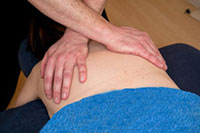
A variety of techniques derived from a number of different disciplines are applied in a manner aimed at reducing pain.

The Range of Techniques Employed
Myofascial release concentrates on the body's connective tissue (fascia) recognising that adhesions within the tissue fibres will cause irregular function that can impact on movement and restrict muscle function. Because fascia covers the whole body adhesions therein may produce a local restriction or alternatively restriction in more distant parts of the body.
Trigger point therapy works on the adhesions that can arise within muscles resulting from the build-up of toxins. The impact of a trigger point on a muscle is to prevent full function and can create pain either locally or referred to a more distant part of the body. For example a trigger point in the calf can result in pain in the lower back.
Soft tissue release is a sports massage technique whereby short quick movement can release muscular tissue prior to the body's protection reflex being activated. Tight muscle fibres are resistant to stretching but this technique acts before resistance kicks in, thereby encouraging muscle fibre back to their proper length. It is a useful technique to aid rehabilitation after injury.
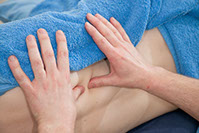
Example of Trigger Points Referred Pain
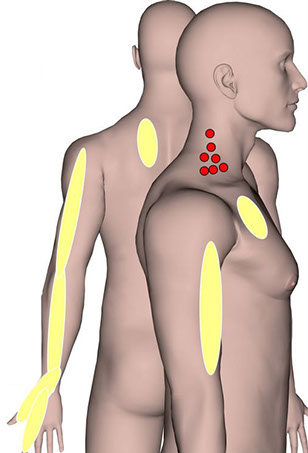
The diagram demonstrates the referred pain pattern for the Scalene muscles in the neck. The red spots represent the trigger points and the yellow areas depict the likely areas of pain.
Trigger points in these muscles can even replicate the symptoms of carpel tunnel syndrome.
Trigger Points
Doctors Travell and Simon in their research work "Myofascial Pain and Dysfunction" described a trigger point as a "hyperirritable locus within a taut band of skeletal muscle, located in the muscular tissue and/or its associated fascia."
Deep tissue massage employs techniques to work on tissue at a deeper level of the body. It allows deeper work, not harder. Clients should avoid the temptation to adopt a "no pain - no gain" attitude, I use the technique as a complement to the other techniques not a replacement.
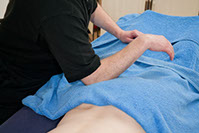
Stretching comprises a number of forms including passive (where I stretch the client and the client does nothing), proprioceptive neuromuscular facilitation "PNF" (where the client initially resists the stretch before I take them into stronger stretch) and Active Isolated Stretching "AIS" (whereby the client does quick repetition stretches of specific muscles and I quickly extend the stretch further). Stretching has many benefits including improved circulation, enhanced joint mobility, help in prevention of injury and it feels good afterwards.
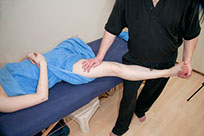
Table Thai massage is a blend of acupressure and stretching taken from
Traditional Thai massage and adapted for use on the massage couch. It can easily be incorporated in a "Western" style treatment.
Table Thai massage, stretching and some deep tissue and fascial work can be combined to form a massage performed whilst the client remains fully clothed.

